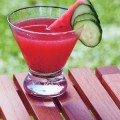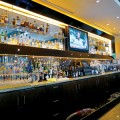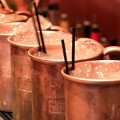Manresa chef and owner David Kinch always wanted to serve cocktails and spirits in his nearly 10-year-old Los Gatos restaurant, but red tape and other obstacles stood in the way. In May, the bar was finally unveiled after a remodel that moved the front door to the end of a wide stone walkway around the side of the restaurant. Once in the door, the small, backlit bar beckons at the end of short, sparely decorated foyer.
The bar is really more of a lounge. There are no bar stools yet, just a pair of comfy gray chenille couches between the bar and the reception desk. Additional seating will come next year, as well as a small menu. The lounge may evolve into a place where people come just for a cocktail, but for now it’s geared to offer early arrivals an opportunity to savor a drink while they wait for the rest of their party or for diners to enjoy a drink before or after diner. The drinks run in the range of $14 to $19.
Of course, this being Manresa, one of the most celebrated restaurants in the world, this is no ordinary bar.
“My vision has always been for the cocktail program to be a logical extension of what we’re doing already in the kitchen,” says Jeff Bareilles, Manresa’s beverage director.
That means creating seasonally inspired cocktails made from ingredients sourced from Love Apple Farms, Manresa’s biodynamic farm in the Santa Cruz Mountains. Given Kinch’s modern and cerebral style of cooking, Bareilles decided against serving a lineup of classic cocktails.
While the craft-cocktail renaissance is still going strong, and he was strongly encouraged by consultants to go in that direction, Bareilles felt serving faithfully rendered martinis and Manhattan’s would not serve Kinch’s food well. But he didn’t want to make the bar so esoteric that someone looking for his or her go-to cocktail will feel out of place. As a compromise, Bareilles and his team have developed a changing list of “Manresa original cocktails” as well as “Manresa classics,” old-school cocktails upgraded with a shot of Manresa’s signature creativity and cleverness.
“I wanted Jameson and Jack Daniel’s off the shelf,” Bareilles says. “People have their drink no matter where they are.”
But if a guest asks for a Jack and Coke, they’ll get a drink made with the caraway-seed syrup and molasses syrup instead of Coca-Cola or a Gibson made with Vietnamese-style pickled leaves instead of those little pea-size pickled onions.
Simple syrup? Please. Manresa uses an A.O.C. sugar cane syrup from Martinique that has a complex, less sweet sweetness. A.O.C. stands for appellation d’origine controlee, a French term that means “controlled designation of origin.” It’s a French certification given to certain products. The syrup is the only A.O.C. product made outside of France. Take that, sugar and water.
Bareilles says he makes his drinks “backwards.” Instead of starting with a base spirit like gin or bourbon and building a drink around that, he begins with the ingredients and supporting flavors and then layers in the appropriate spirit.
“This what I’ve learned working with David over the past seven years,” he tells me.
Like Kinch, Bareilles takes his inspiration from what’s growing at the farm and the produce and other ingredients come into the kitchen door. “Field Notes” is a vodka drink based around the acidic tang of sorrel and the aromatic base of celery bitters and lemongrass infusion. Bareilles’ idea for the drink came from sorrel growing at Love Apple Farms and the memory of munching on sour grass as a kid playing in the East Bay hills. It’s a delicate, yet aromatic drink that does evoke the smells and aroma of a grassy field.
Manresa’s take on a margarita is the excellent Smoke Signals, a cocktail invented by dining room captain and mixologist Ricardo Huitron. The drink blends tamarind syrup, mezcal, Luxardo maraschino liqueur and lime juice. The smokiness of the mezcal shines through but it’s the interplay of the lime, tamarind and maraschino liqueur that make the drink.
Many of the drinks are made collaboratively. Bareilles hosts monthly meetings at his house with his staff to create new cocktails.
“My kitchen has transformed. It’s a bit like a laboratory.”
He’s got high hopes for a cocktail made with Meyer lemon and chanterelle-infused vodka. “It’s not there yet but we’re almost there,” he says.
While he once worked as a bartender, Bareilles is a wine guy—a sommelier. While he was excited about adding a cocktail program to the restaurant he admits he was scared, too. A restaurant with two Michelin stars works on a world stage and screw-ups don’t go down well.
“This could have been an incredible disaster,” he confides. “That was the fear.”
Disaster averted. By a long shot.
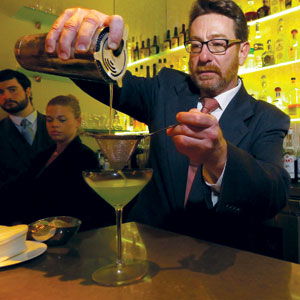
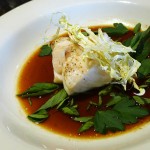 Best Bites: New San Jose Restaurants
Best Bites: New San Jose Restaurants  Smokers Targeted Across the South Bay
Smokers Targeted Across the South Bay 